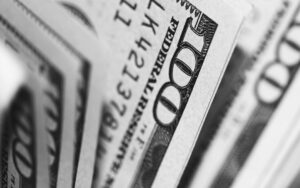The Role of Asian Markets in Forex Trading Hours
The foreign exchange market, or forex, is a global decentralized market where currencies are traded. It operates 24 hours a day, five days a week, and is the most liquid financial market in the world. The forex market is divided into three major trading sessions: the Asian session, the European session, and the US session. Each session has its own unique characteristics and trading opportunities. In this article, we will focus on the role of Asian markets in forex trading hours.
The Asian session is the first major trading session to open in the forex market. It starts at 7:00 PM GMT and ends at 4:00 AM GMT. This session is dominated by the markets in Tokyo, Singapore, Hong Kong, and Sydney. Despite being the smallest of the three sessions in terms of trading volume, the Asian session plays a crucial role in setting the tone for the rest of the day.
One of the key factors that make the Asian session important is its overlap with the European session. The European session is the most active session in terms of trading volume, and the overlap with the Asian session creates a period of increased liquidity and volatility. This overlap occurs between 12:00 AM GMT and 4:00 AM GMT, when both sessions are open simultaneously. During this time, traders can take advantage of increased trading opportunities and higher volatility.
The Asian session is also known for its influence on currency pairs involving the Japanese yen. Japan is one of the largest economies in the world, and the Japanese yen is the third most traded currency in the forex market. As a result, any news or economic data coming out of Japan can have a significant impact on currency pairs involving the yen. Traders closely watch economic indicators like GDP, inflation, and interest rate decisions from Japan during the Asian session to make informed trading decisions.
Another important aspect of the Asian session is the trading activity in Australia. The Australian dollar, known as the Aussie, is one of the major currencies traded in the forex market. Australia is a resource-rich country, and its currency is closely tied to commodity prices, particularly gold and iron ore. Traders pay attention to economic data from Australia, such as employment numbers and trade balance, to gauge the health of the country’s economy and make trading decisions accordingly.
Furthermore, the Asian session provides a unique opportunity for traders who prefer to trade during quieter periods. As the largest financial centers like London and New York are closed during this session, trading activity tends to be relatively subdued. This can be advantageous for traders who prefer a more relaxed trading environment and are looking for longer-term trading opportunities.
However, it is worth noting that the Asian session is not without its challenges. One of the main challenges is the lower trading volume compared to the European and US sessions. Lower trading volume can result in wider spreads, making it more expensive to enter and exit trades. Additionally, the lower liquidity during this session can lead to increased slippage, where trades are executed at a different price than expected.
In conclusion, the Asian session plays a crucial role in forex trading hours. Its overlap with the European session creates a period of increased liquidity and volatility, providing traders with trading opportunities. The influence of Japan and Australia on currency pairs involving the yen and the Aussie respectively, further adds to the importance of the Asian session. However, traders should also be aware of the challenges associated with lower trading volume and liquidity during this session. Overall, understanding the role of the Asian markets in forex trading hours is essential for any forex trader.






